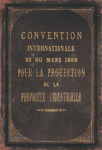
In the News
Indian Film Industry Losing Billions to Piracy
A study conducted by Ernst & Young India for the US-India Business Council (USIBC) estimates the loss in revenue for the Indian film industry due to piracy at US$4 billion (Rs16,000 crore) per year and 820,000 jobs. And some say the estimate is conservative.
The Federation of Indian Chambers of Commerce and Industry (FICCI) reports that India’s entertainment industry currently earns $11 billion annually and is growing at a rate of 18 percent a year. It is expected to be earning $28.5 billion by 2012. “If we can stop piracy, these industries will grow even faster and employ more Indian workers,” said FICCI secretary General Dr. Amit Mitra.
Study results were released by USIBC President Rom Sommers at the FICCI-Frames 2008 Business of Entertainment Conference. The way forward, he stated was “to build public awareness on the need to fight counterfeiting and piracy, advocate against piracy by supporting the passage of the optical disk legislation and fighting the scourge of cross-border piracy.”
Although the popularly named Bollywood produces more films than Hollywood, its earning amount to two percent of that of the American entertainment industry.
________________________
Copyright – Superman’s New Power?
He’s faster than a speeding bullet and has x-ray vision, but it is not his super powers that are under contention. Rather, it is ownership of Superman’s lucrative copyright.
Superman’s creators Jerry Siegel and Joe Shuster sold the rights to the comic in 1938 to Detective Comics, Inc. (which later became DC Comics) for US$130 – $10 per page for a 13 page comic –under the U.S. work for hire copyright doctrine. DC made a fortune on the investment – the Man of Steel appeared in newspaper strips, radio series, on television, in movies, on merchandizing, etc.
In 1976, an amendment to the US Copyright Act made it possible, under strict conditions, for the creators of works made for hire to reclaim their rights when the copyright was due for renewal. A court decision at the time sided with Warner (DC’s parent company) against Siegel; nonetheless Warner decided to award both creators US$35,000 a year each for the rest of their lives and guaranteed they would acknowledge the pair with the words Superman "created by Jerry Siegel and Joe Shuster."
A further amendment to the US Copyright Act in 1997 opened the possibility for the heirs and estates of the original creators to recapture copyright. So when Superman’s copyright came up for renewal in 1999, Siegel’s heirs filed their claim. Almost ten years later, in March 2008, U.S. District Judge Stephen G. Larson ruled in favor of the Siegel family; Time Warner must share copyright in the US from 1999 onward, but retains all rights abroad. A calculation will be made of earning so that revenue can be shared. Time Warner is expected to appeal.
Judge Larson’s landmark decision opens the way for many creators and their heirs to file similar cases when their copyright comes up for renewal. The estate of Joe Shuster has now filed a similar case.
________________________

Paris Convention - 125th Anniversary
On March 20, the Paris Convention for the Protection of Industrial Property, one of WIPO’s two founding conventions, celebrated its 125th year. The Convention was signed in Paris in 1883 by 11 states and had 14 member states when it entered into force a year later. Today, the Paris Convention counts 172 member states. It is widely considered the cornerstone of the international industrial property system.
The main motivation in concluding the Paris Convention was for countries to offer their own citizens the possibility of accessing intellectual property protection systems in foreign states – 125 years later, this philosophy endures. “The principles enshrined in this landmark treaty are as valid today as they were a century and a quarter ago,” said WIPO Director General Kamil Idris.
________________________

(Photos.com)
Climate Change Focus of European Patent Forum 2008
“Inventing a cleaner future: Climate change and opportunities for IP” is the theme of this year’s European Patent Office (EPO) Forum to be held on May 6 and 7. The Forum will be dedicated to finding answers to the question: How can the fields of patenting and intellectual property support innovation that benefit the environment and counteract climate change? It will be the first international conference to focus on climate technology and patenting strategies. International experts will make a realistic assessment of the current environmental situation and future trends; panels will discuss pressing questions, and their will be focused seminars outlining the details of patenting procedure that are relevant to climate technologies.
Slovenia, which currently holds the European Union Council Presidency, will host the event in Ljubljana. The EPO will also award the European Inventor of the year at the event.
________________________

(Photos.com)
IP Auction: Sold! US$6 Million to the Bidder on the Phone!
A portfolio of 82 patents sold at the Ocean Tomo Spring 2008 IP Auction in San Francisco in early April for US$6 million. The bid came from an anonymous phone bidder. It is the highest price paid at an IP rights auction. The patents in the portfolio relate to the processing of digital data bitstreams.
Two other lots at the auction hit the $1 million mark, but most bids do not attract such high prices. Some sold for as little as $10,000. Ocean Tomo held a conference on leveraging IP for investors and corporate IP strategies as part of the two-day event.
________________________
The WIPO Magazine is intended to help broaden public understanding of intellectual property and of WIPO’s work, and is not an official document of WIPO. The designations employed and the presentation of material throughout this publication do not imply the expression of any opinion whatsoever on the part of WIPO concerning the legal status of any country, territory or area or of its authorities, or concerning the delimitation of its frontiers or boundaries. This publication is not intended to reflect the views of the Member States or the WIPO Secretariat. The mention of specific companies or products of manufacturers does not imply that they are endorsed or recommended by WIPO in preference to others of a similar nature that are not mentioned.